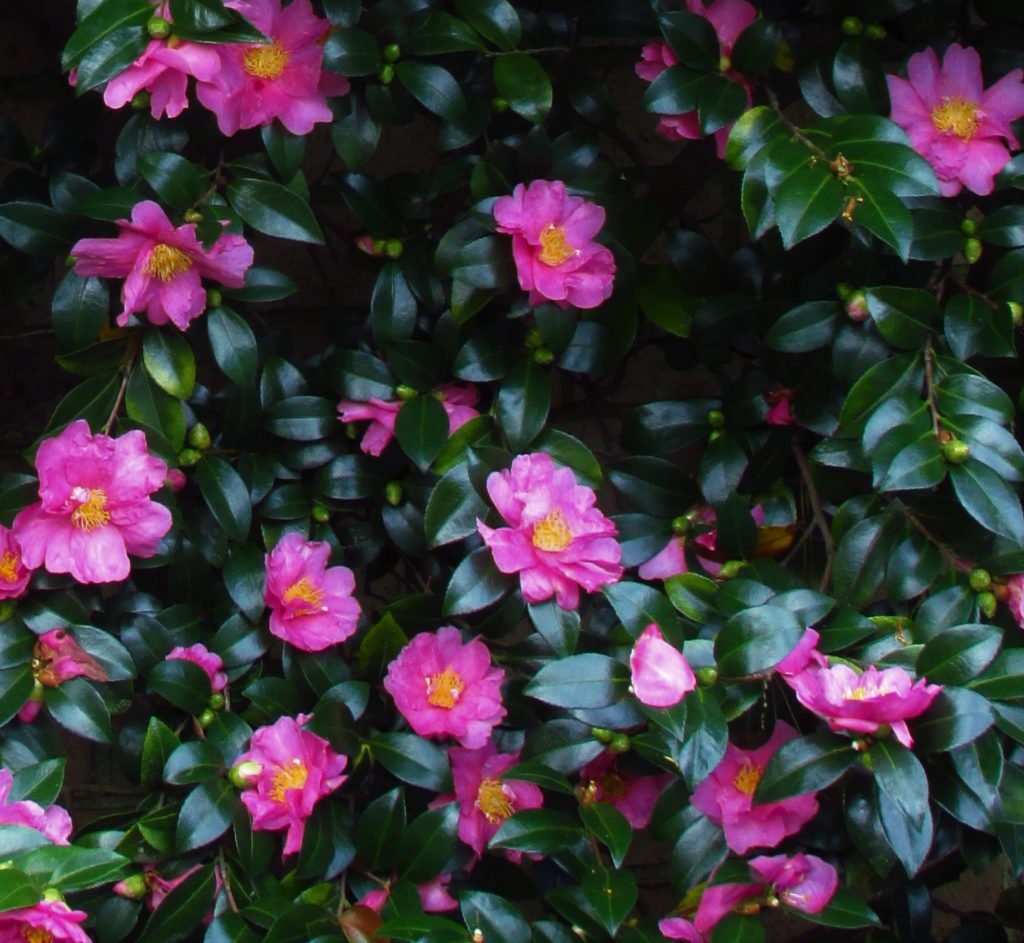
Plant envy. It’s that feeling you get when you realize that you purchased plain jane plants at the garden center a few years back, and there’s something blooming in your neighbor’s yard that you’ve fallen in love with. The good news is that autumn is the perfect time to plant a few of those late-blooming plants and shrubs that you admire.
Garden centers tend to sell perennials and shrubs when they are at their showiest, so if you want color for September, October, and beyond, this is a good time to go shopping. No matter when you look, you’ll be able to find the classic Camellia sasanqua for sale, but if you want to see it in bloom when you buy, this is the time to shop around for the perfect one. The same goes for fall-blooming perennials, such as Japanese anemones.
Showy Shrubs You’ll Want to Add to Your Garden This Season
The first shrub that comes to mind for autumn color is the beautyberry, or callicarpa, because this berry display has a wow factor. I have both the native beautyberry and a couple of cultivars in my own garden, and they’ve been decked out with glowing violet-purple berries since September. ‘Pearl Glam’, a new cultivar, has deep purple foliage that sets off the berries nicely. This shrub will grow in sun or part sun, and it looks particularly good as a transition plant if you have a wooded back or side yard.
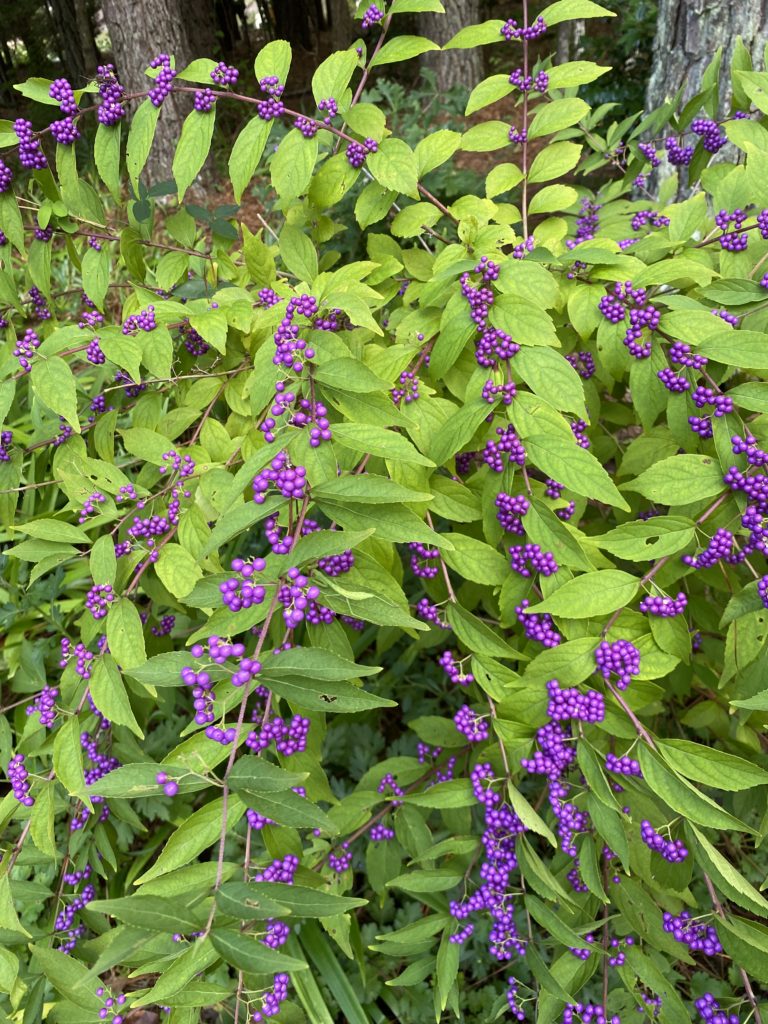
Caryopteris, or bluebeard, is another great option for fall color. ‘Beyond Midnight’ has deep blue flowers, and is a compact grower that prefers full sun. It would look beautiful combined with coneflowers in any warm autumn tone. I love the quirky looking ‘Pavilion Pink’ which flowers on short internodes along the stems. This caryopteris selection will only reach about 18 inches, making it perfect for the middle section of a sunny flower border. In my garden I planted it in a meadowy (or messy, depending on your point of view) area with many other types of perennials, and the blooms looked charming floating just above the other plants. Pollinators love this plant group.
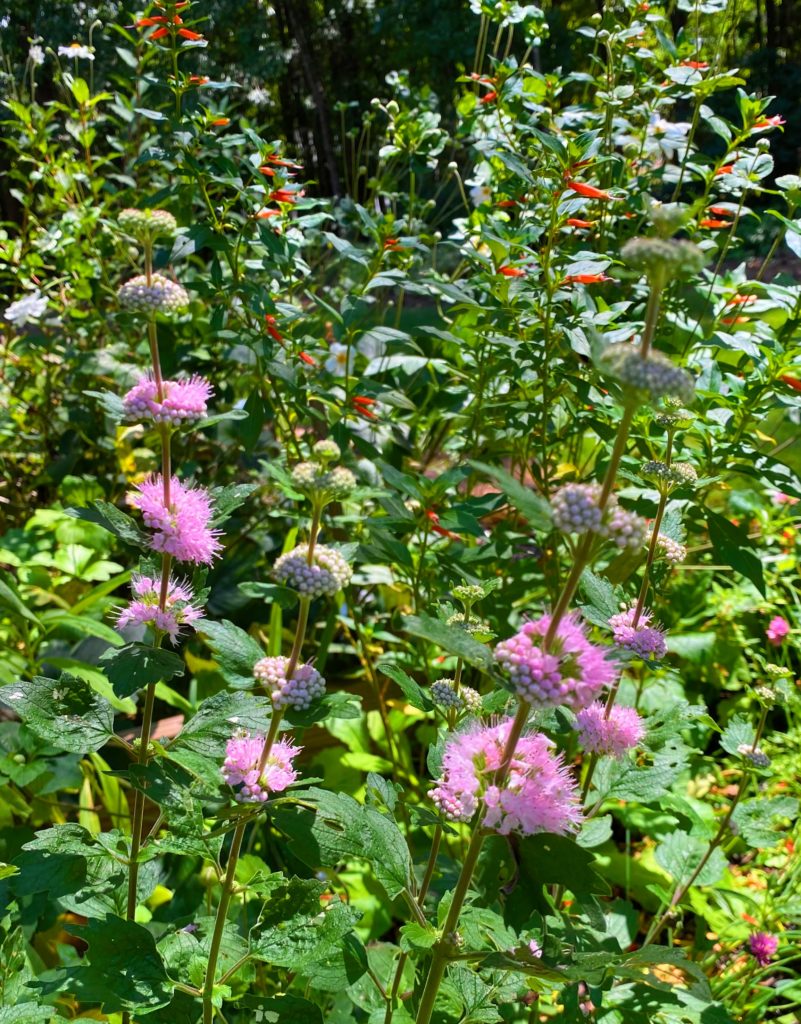
While hydrangeas bloom all summer, they are just as lovely in fall. The panicle hydrangea ‘Quick Fire’ has excellent fall foliage color, with blooms that turn from rosy-pink to deep red. If you want something more subtle, ‘Lime Light’ blooms slowly change from pale green, to white, to buff tinged with rose. (This is also the perfect time to cut the blooms for drying to create a wreath or dried-flower arrangement. Simply cut long stems, place in a vase, fill with several inches of water, and allow it to evaporate. By the time the water is gone, the blooms will have dried beautifully.)
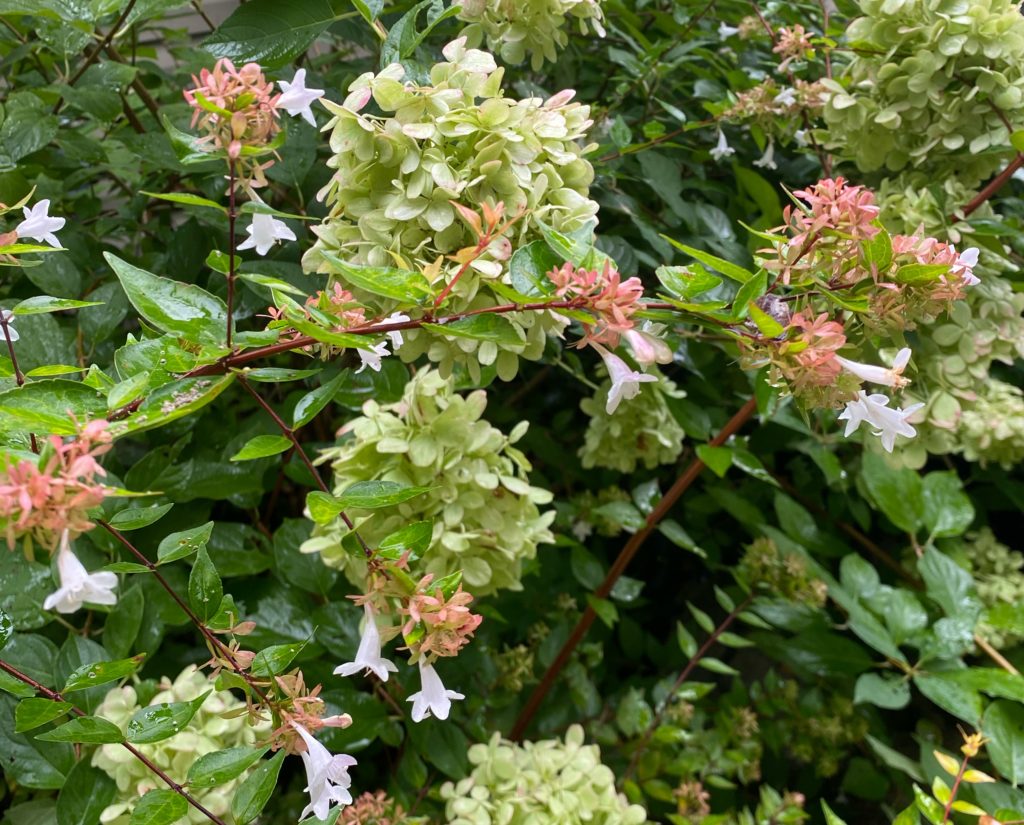
Camellia sasanqua is one of the best shrubs for shady garden spaces in the South. I haven’t met a camellia I didn’t love, and I’ve planted far more than I ever thought I could get away with on my suburban lot. When I ran out of shady spaces, I started planting them in containers.
Why are they so special? They are in bud now in my garden, and will bloom for months on end. If you have a good space for a fall-blooming camellia, think about the shape that would work well for you. Do you want an upright shrub with some height? Choose a vase-shaped grower like ‘Kanjiro’. Need a horizontal grower? Choose the bonanza series, or the classic ‘Shishigashira’. (Note that C. japonica is the spring-blooming camellia, equally beautiful, but typically a much larger shrub at maturity than C. sasanqua.)
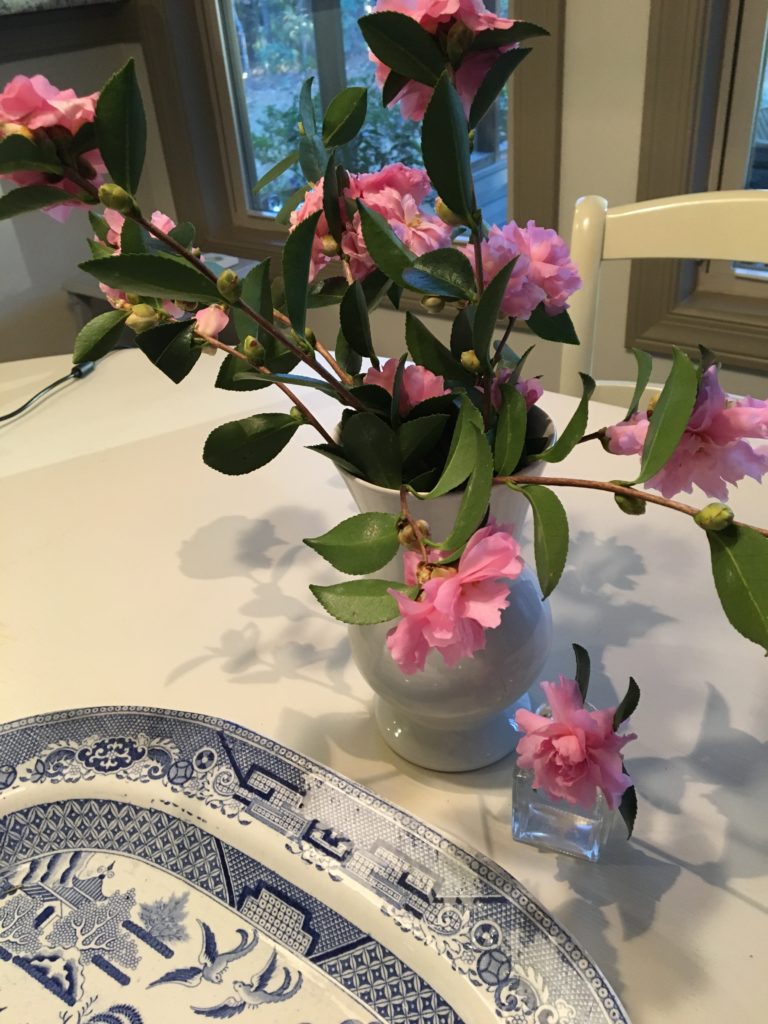
I should probably mention the very popular ‘Encore’ azalea, which blooms in spring, and then again in fall. If you love azaleas, there are plenty to choose from in this series. They don’t make my heart skip a beat, and for that reason I’ve never grown them in my own garden.
Walk Right Past the Mums
Mums are everywhere this month, and while it is tempting to grab a few at the grocery store or the garden center, there are so many other container plants that you might consider for fall interest. I have nothing against mums, but if it is too warm, the blooms fade quickly, and I hate the fiddly job of deadheading that ball of blooms just to keep the plant looking presentable for a couple of weeks. If you have a sunny front porch they are a quick and easy option for a fall party, but if you have just a few extra minutes to shop, you can come up with something more interesting.
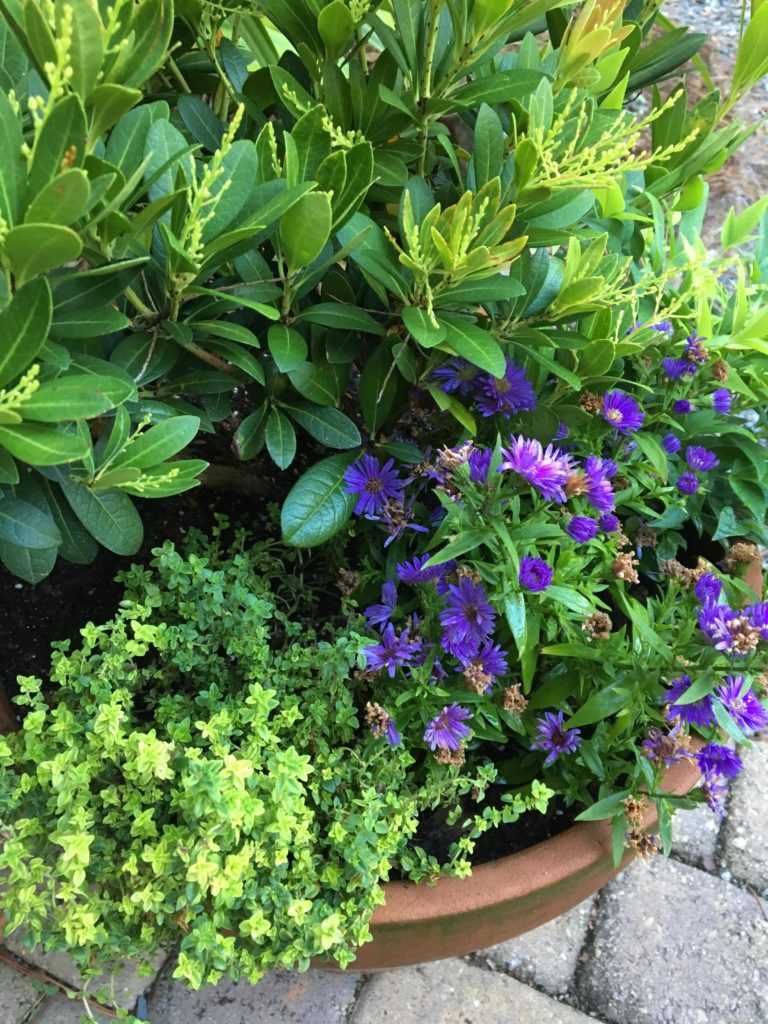
Need to dress up a sunny spot?
- First choose a handsome ornamental grass in a one gallon pot as your center plant.
- Add a coneflower or two in a color you love.
- Add a few evergreen foliage plants, such as heuchera or euphorbia.
- Choose a trailing plant such as creeping wire vine or ivy to soften the edge of your container.
Have shade?
- Choose a large one-gallon autumn fern (or any other evergreen fern) for the center of the pot.
- Add any other evergreen foliage plants that catch your eye. (You’ll find most in the shade plant area.) Some options are acorus grass, heuchera, tiarella, ajuga, ivy, creeping jenny, pachysandra, or periwinkle vine. Anything will work here, and you can mix it up for more texture.
- If you feel that you must have blooms to add to the arrangement, choose a viola or two, as they are more shade-tolerant than pansies.
- If you want to add a sweet pop of color, stop at the pumpkin and gourd display and choose a few tiny ones to nestle into the foliage of your container planting.
Don’t forgot to choose a terracotta or ceramic container if you don’t have one at home, along with plenty of potting soil, and you’ll have a unique container arrangement to enjoy for weeks this fall.
You Can Never Have Too Many Late-Blooming Perennials
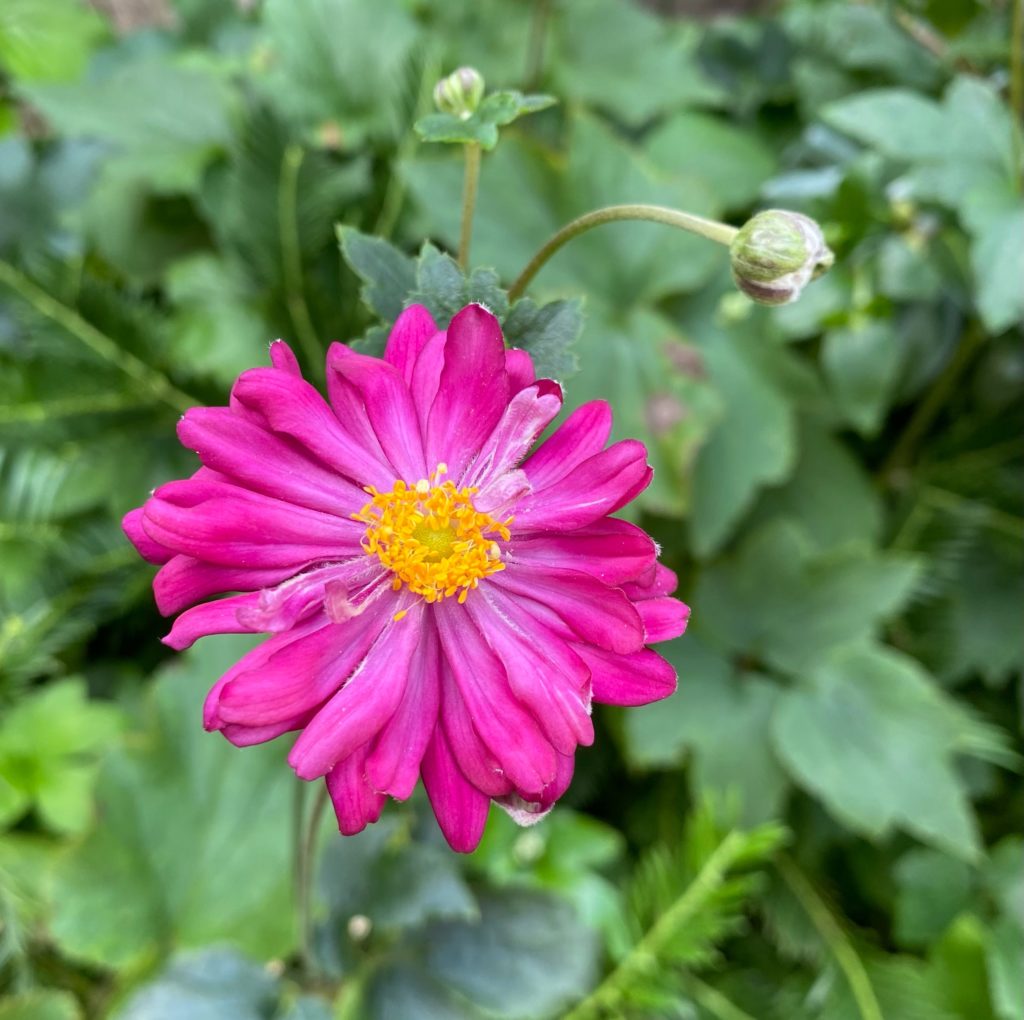
Some of my favorite plants bloom in fall, and every year I look forward to seeing them. Early on, when I had more shade than sun, I had a weakness for Japanese anemones, and I now have four different types tucked into nooks and crannies in my current garden where the deer cannot get to them. ‘Pamina’ is my favorite at the moment, with saturated rose pink flowers that are sophisticated and rich-looking. All of them are delightful, and if you have an area with morning sun and an hour or two of afternoon shade, they will be a good investment, as they spread slowly and therefore can be shared with gardening friends, or moved to other areas of your garden. They will take full sun with adequate moisture, but in my zone 8 garden they seem to prefer a bit of shade at some point during the day.
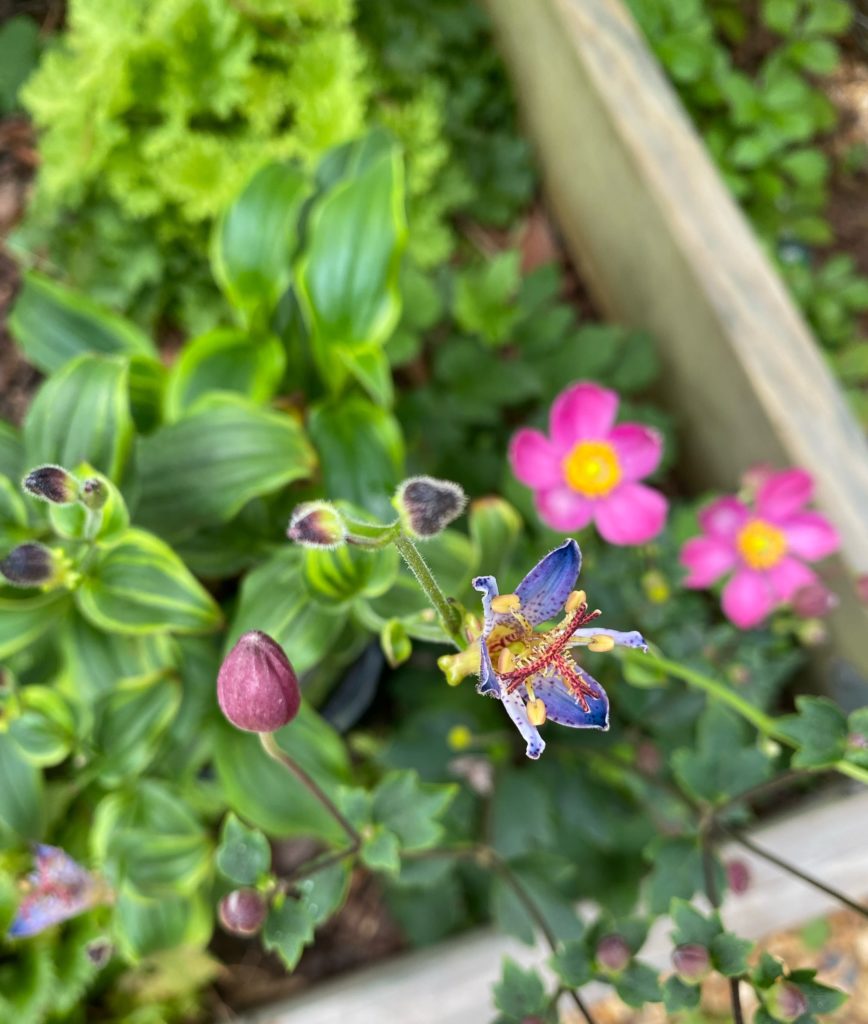
Toad lilies, or tricyrtis, are one of those plants that might go unnoticed in the garden center, but years ago I fell for the tiny, vivid purple, orchid-like blooms, and I typically have one somewhere in my garden. These are true shade plants, and will scorch if planted in too much sun. ‘Autumn Glow’ is my newest toad lily, and this variety has gold leaf edges that make it attractive all summer, even when it hasn’t begun to bloom. Toad lilies work well combined with hostas, ferns, Lenten roses, and other shade-loving plants.
Chelone, or turtlehead, is a native plant suited to damp spots in the garden and it blooms in August and September, just when you need something to give a boost of color before asters and other fall plants begin blooming.
The Asian aster ‘Ezo Murasaki’ is a new favorite of mine, and it is covered with blooms this week in my garden, to the delight of the bumblebees. It has small daisy-like purple blooms, and I like the form of this aster compared to others I’ve grown that can seem a little gangly by the time they bloom, even if I cut them back in summer. This aster stays around two feet high if you cut it back by six or eight inches in early summer to keep it compact. It loves moist soil, but also does well in average garden soil. In moist soil it will spread up to 8 feet wide, which is desirable when you have a large border, but easily corrected if you want to keep it in bounds. Simply dig up the clumps you don’t want and pass them along to a gardening friend.
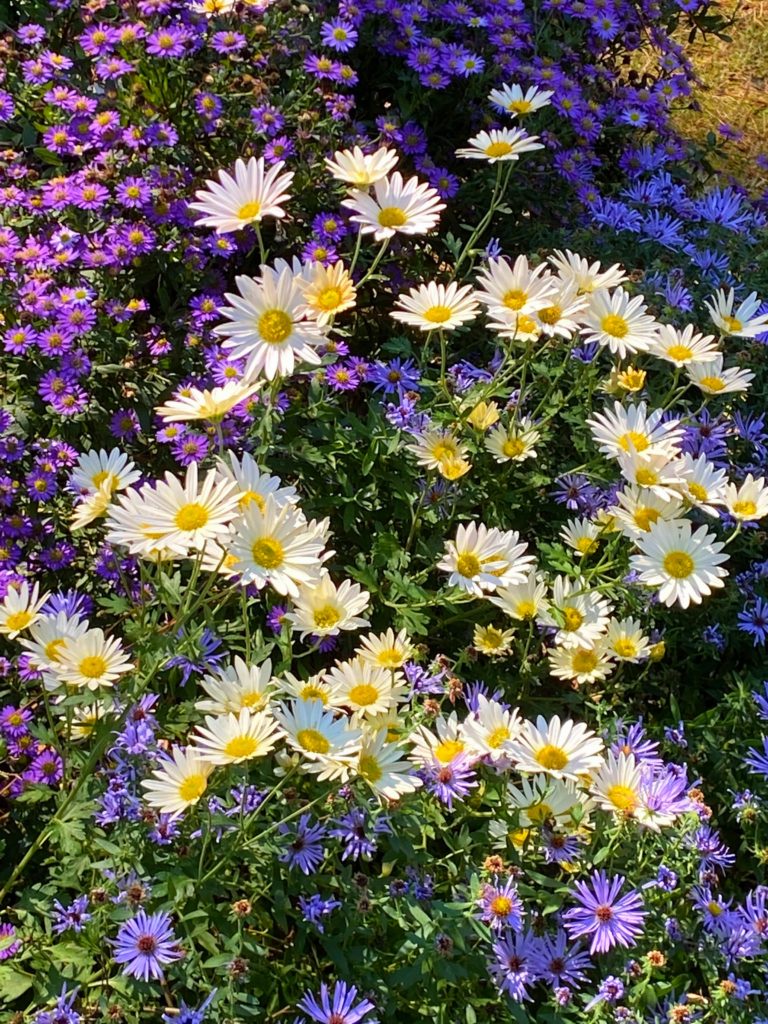
The perennial mum ‘Sheffield Pink’, now known as a dendranthema, is an antique variety that is a vigorous grower. It spreads nicely in a sunny spot in average garden soil, so there are always plenty of clumps to share with a neighbor. Planted in a sunny border, this mum will reward you with loads of peachy pink daisy flowers for weeks. Tip: I cut it back by six to eight inches every year around July 1 to keep it from flopping by the time it blooms in October.
Enjoy your garden this fall!